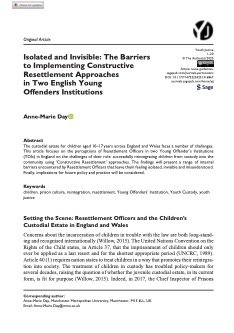By Karen U. Lindell and Katrina L. Goodjoint
Since the U.S. Supreme Court’s decision in Roper v. Simmons banning the death penalty for young people under the age of 18, the principle that “kids are different” has come to permeate the justice system’s approach to young people. The developmental differences between adolescents and adults are now codified in numerous state statutes, have been cited in countless court decisions, and are foundational concepts in juvenile defense. And, while there is much work still to be done, the shift toward a developmental approach to youth justice has contributed to dramatic reductions in youth incarceration rates over the last decade.1 Yet even the Supreme Court has acknowledged, “[t]he qualities that distinguish juveniles from adults do not disappear when an individual turns 18.”2 People do not transform from children into adults on their 18th birthdays; instead the transition to adulthood is gradual and highly individualized.
The report begins by describing the defining characteristics of emerging adulthood and laying out the case for reforming the justice system’s approach to emerging adults. The report then examines examples and lessons from around the country where reforms are underway, including raising the age of juvenile court jurisdiction, reforming criminal justice procedures and practices, and using support from systems outside of the justice field. Finally, the report presents an in-depth look at the legal provisions and programs impacting emerging adults in the six states of the Great Lakes region—Illinois, Indiana, Michigan, Minnesota, Ohio, and Wisconsin. Our hope is that this report provides policymakers and advocates in each of those states, as well as elsewhere, greater tools to reshape justice for emerging adults in their jurisdictions.
Philadelphia, PA: Juvenile Law Center, 2020. 96p.





















